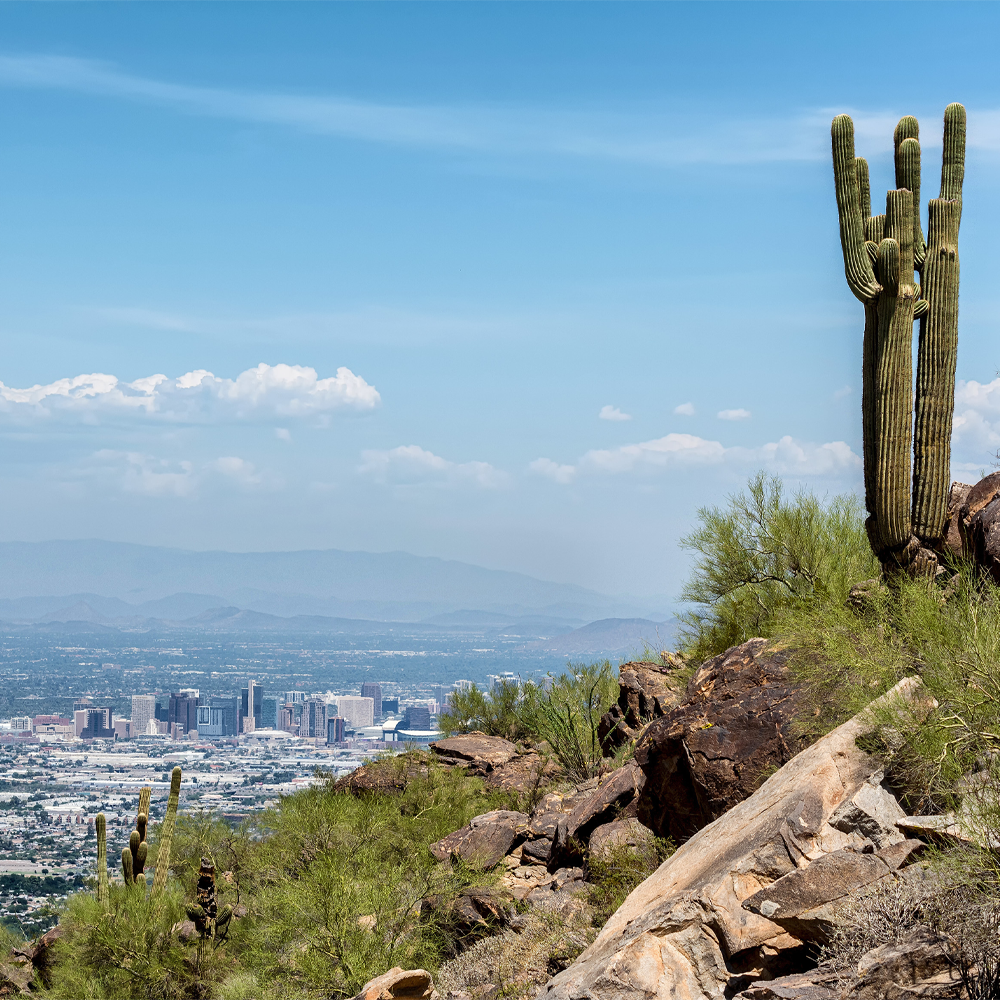We Thrive in our State’s Unique Landscape Because of Wise Water Management

By AMWUA Staff
On February 14th, Arizona celebrates its 112th birthday, which is the perfect opportunity to appreciate where we live and embrace our state's diversity in landscape and weather, as well as how we continue to be resilient despite the challenges continually thrown our way.
While a large portion of the State sits at least 4,000 feet above sea level and possesses the world's largest Ponderosa Pine forest, Arizona is well-known for its vast desert and arid climate. About one-tenth of Arizona is forested, one-fourth is woodland, one-fourth is grassland, and the rest is desert, which seems appropriate because Arizona is the only state that includes a part of the four deserts found in North America - Sonoran Desert (the largest), Mohave, Great Basin, and the Chihuahuan Desert.
Even though it is a desert State, Arizona has more shoreline than you would expect. Within our borders are human-made lakes (from dams), including Roosevelt Lake, Bartlett Lake, Canyon Lake, Saguaro Lake, Apache Lake, Lake Havasu, and the two largest human-made lakes in the U.S. - Lake Powell and Lake Mead. Arizona also has many creeks and rivers, including the San Pedro River, Gila River, Verde River, Salt River, and the Colorado River is our state's western border.
All of these characteristics highlight our State's diversity and showcase the challenges that come from living in Arizona's varied climate and geography, which can yield both the highest and lowest temperatures in the country within the same day. Precipitation levels also vary from border to border, but rain averages can be as low as five to eight inches annually in the desert portions like here in the Valley.
So, with all this said, it's pretty amazing to think we can thrive in the predominantly arid parts of Arizona, which would not be possible without access to reliable water supplies. The ten AMWUA cities’ effective planning, management, and investment in those water resources and the necessary infrastructure ensures that 3.7 million residents and the businesses key to our economy have water. These water systems are collectively comprised of 18,000 miles of pipes, 30 treatment plants, and over 136,000 fire hydrants to protect homes and businesses. Municipal water providers take the responsiblity for making sure water is delivered every day of the year very seriously, which is why each AMWUA city has worked to attain a 100-year Assured Water Supply Designation. On this foundation of these municipal water systems, the Phoenix metropolitan area has built a thriving economy that generated $320 billion in Real Gross Domestic Product (GDP) in 2022.
Along with the country’s most proactive groundwater management structure, conservation in Arizona’s most populated areas has been mandated for more than 40 years. That strong water conservation ethic has made a difference and continues to have an impact. For example, the ten AMWUA cities collectively use the same amount of drinking water today as they did in 2000, despite an increase of one million people. Our collective dedication to wise water use allows us to enjoy our desert lifestyles and a strong economy because people have come to understand the importance of safeguarding our water now and for future generations.
So please take some time to reflect on everything our State offers. Also, remember that maintaining our quality of life in this challenging environment comes with a responsibility to protect our most precious resource, as we all play a part in our resiliency by being water-wise.
To print or save this week's blog, a PDF version is available HERE.
For 55 years, the Arizona Municipal Water Users Association has helped protect our member cities' ability to provide their communities with assured, safe, and sustainable water supplies. For more information, visit www.amwua.org.
To stay informed, sign up for the AMWUA blog